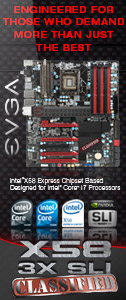
Introduction
In the beginning, when Man made machines, it became clear that some people were more enthusiastic about technology than others, indeed some people just want the utmost performance possible for the minimum price, often sacrificing other areas to achieve this.
While others decided that performance was important, there was a necessity for quiet operation too, so in order to decrease noise they were willing to sacrifice performance. Unfortunately, these two different groups co-existed for a long time, and many failed to persuade users of the other faction to switch their allegiance, until that is, Noctua came along…
Established in 2005, Noctua arose from a cooperation of the Austrian Rascom Computer distribution and the Taiwanese cooling specialist ,Kolink International Corporation. Combining more than ten years of experience in the development, manufacturing and marketing of high-end cooling components, Noctua was born
Today, Noctua is present in more than 30 countries across the globe and working with several hundred sales partners.
So what does Noctua mean?
The little owl, Athene noctua, is the symbol of the Greek goddess Athene, who represents wisdom, science and strategy. This it seems a very prudent choice for a technology company.
However, We digress…
Due to the advancement of technology, there is a real need to move hot air away from the thermal structures that adorn our systems. The best tried and tested method is by using a fan, but with so many companies claiming that their products are the best, how do you choice the right one? The answer is simple really, going back to the beginning, there are two choices, high airflow or silence. You have to pick your poison, however, Noctua believes that they have solved this problem…
Â
| Specification |
 |
As you can see, the specifications of the NF-P12 are quite impressive, offering ~54.3CFM @19.8dB, but one thing that a decibel rating doesn’t cover is the actual pitch of the sound that the fan outputs, this will be covered later in the review.
Â
Packaging
The outer box is quite fancy for a fan, it features simple colours and lots of information. There is a window on the front of the box which allows you to see the blades of the fan and a silicon mount.
| Front | Back |
 |
 |
The box also has a little flap, which honestly was not noticed for a long time, underneath the flap is lots of extra information about various aspects of the fan:
| Left side | Right side |
 |
 |
To make things easier, here are the various sections of information, first there is the nine blade design with vortex control notches:
| 9 Blade Design |
 |
Then there is the staggering of the vortex control notches:
| Staggering of VCN |
 |
Next, there is a comparison between the P12s trailing edge and standard trailing edges:
| Trailing edge vortices |
 |
| Joining edge |
 |
Then the SSO bearing operation is detailed:
| SSO Bearing |
 |
And finally a comparison of different bearings:
| Bearing comparison |
 |
Â
Package contents
| Inner packaging |
 |
Â
Â
Included in the package are:
- Low-Noise-Adapter (L.N.A)
- Ultra-Low-Noise Adapter (U.L.N.A)
- 3pin to molex adapt er
- 4 Silicon mounts
- 4 Fan screws
- 1 NF-P12 fan
| Silicon mounts |
LNA | ULNA | 3pin
convertor
|
 |
The noise lowering adapters have different resistors in series with the supply line, the “Low noise adapter†houses a 51ohm resistor*, which would drop the voltage from 12 volts to ~8.7v
| LNA Resistor |
 |
The “Ultra Low noise adapter†houses an 82ohm resistor*, which would drop the voltage from 12 volts down to ~7.4v
| ULNA Resistor |
 |
There is of course nothing to stop you connecting both low noise connectors in series and having a potential 133ohm reduction, meaning the voltage supply to the fan would be lowered to ~6v
The silicon mounts allow you to mount the fans without having direct contact between the case and the fan itself, this means that vibration isn’t transferred to the chassis structure, which means that you don’t get an annoying rattle.
The 3pin to molex connector allows you to use the fan in any situation do to the universal appeal of the connector.
*both resistors are rated for +/-5%
The fan
In true Noctua attire, the fan is in the usual ‘love-it-or-hate-it’ colours, sporting a golden beige frame and a brown blade structure.
| Front | Side | Rear |
 |
Â
As you can see in the photo, the blades have notches cut out of the edges, this is the clever part of the fan, the notches act to reduce the noise output of the fan by spreading the sound output over a wider range of frequencies.
Close-up of the notches:
| Notches |
 |
The fan is designed with sound levels in mind and due to the nine fan blades, the structure of the way lends itself to optimal pressure. This means that the fan will perform better in restricted environments such as on a radiator or CPU cooler with close fin spacing.
The fan’s smoothness of operation is ensured by the usage of smooth commutation drive which reduces torque variations.
The quiet operation is maintained via the use of a self-stabilising oil-pressure bearing.
As mentioned earlier on, the pitch of the noise emitted from a fan can be very distracting, thankfully the Noctua is a pleasant low whir.
The fan also has a generous cable length of ~40cm, the cable also has a rubber casing and is heat shrunk to keep things tidy.
Testing
Unfortunately, we don’t have fancy gizmos that measure the amount of flux being cut within the motor, or the air pressure and sound levels. However, for all of the 120mm fans that I have come across, without a shadow of a doubt, the P12 is the quietest when running at 12v.
The easiest way to describe the noise (or lack of), is that it is approximately the same as a standard fan that has been volt-modded to 7v, or as loud as rubbing your fingers together if you have rough skin. The fan is nice and quiet, but with the added benefit of higher airflow.
However, as soon as you start to add the L.N.A adapters, it just wipes the floor with everything else, the 51ohm adaptor makes the fan practically inaudible while still pushing a decent amount of air.
The 82ohm wire as far as we could discern, only reduced the noise level slightly more, but reduced the airflow somewhat.
Stringing the two adapters together makes the whole thing as silent as can be, the only way you can tell it is still spinning is by looking at it, or by sticking your tongue in it (which isn’t recommended)
The test setup used to test these fans is as follows:
-AMD Athlon 6400+ black edition
-ASUS ROG Crosshair
-OCZ Reaper 2x2GB
-EVGA GTX260 SSC
-Thermalright Ultra 120 Extreme
| Test rig |
 |
Â
Results
| Temperature comparison |
 |
|
Temperature comparison using NF-P12 in conjunction
with the LNA
|
 |
|
Temperature comparison using the NF-P12 in conjunction
with the ULNA
|
 |
|
Temperature comparison using the NF-P12 in conjunction
with the UNLA and LNA
|
 |
The ‘generic’ fan used for testing was a Thermaltake TT-1225 pulling air through the cooler
Results conclusion
As shown by the graphs, the NF-P12 is a valid choice in terms of keeping things cool and air flowing. The NF-P12 was consistently better than the generic fan while being much quieter. The P12 is designed with high static pressure in mind, it should therefore perform even better if used in situations such as radiators or coolers with a high amount of fins per inch. Noctua themselves recognise that while a fan can be used in lots of situations, using the right fan in the correct situation can help you increase performance a little more. Noctua address this by 2 different strategies:
- A quiet high pressure fan
-A quiet high airflow fan
This chart describes the 2 different approaches:
| Two-Fold approach |
 |
Â
Conclusion
It is blindingly obvious the amount of science and time which has been invested in the NF-P12. There is no doubt that it is the best 120mm fan that we have ever come across, low noise combined with decent airflow makes it a winner.
However, as with everything good, there is a downside, and the P12’s downside is its cost. At £18 and $22 USD, some may find it hard to stomach. However, with a life expectancy of 150,000+ hours, and backed by a 6 year warranty it is unlikely that you will need to buy a replacement any time soon
| Pros | Cons |
|
|
*Dependant on personal tastes.
Â
Here at Gilgamesh Reviews we have a three tier rating system. A Silver Award, an Editors Choice Award, and our top honor the Gold Award. To achieve the Gold Award a product must demonstrate a performance level above and beyond the normal, the Noctua NF-P12 does exactly that.







